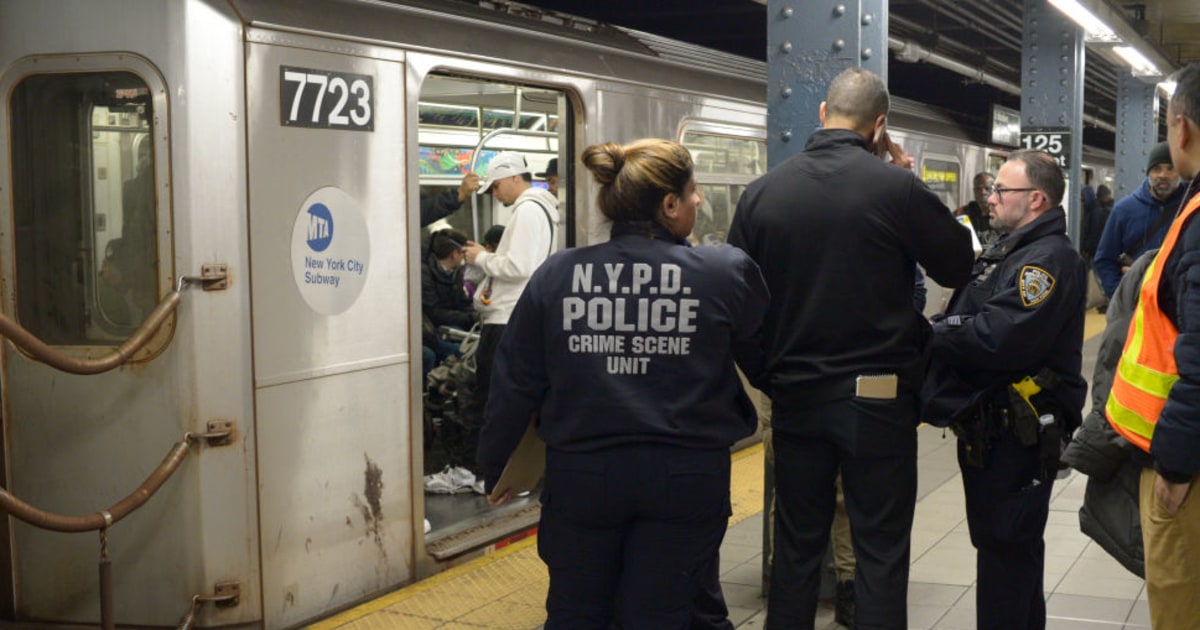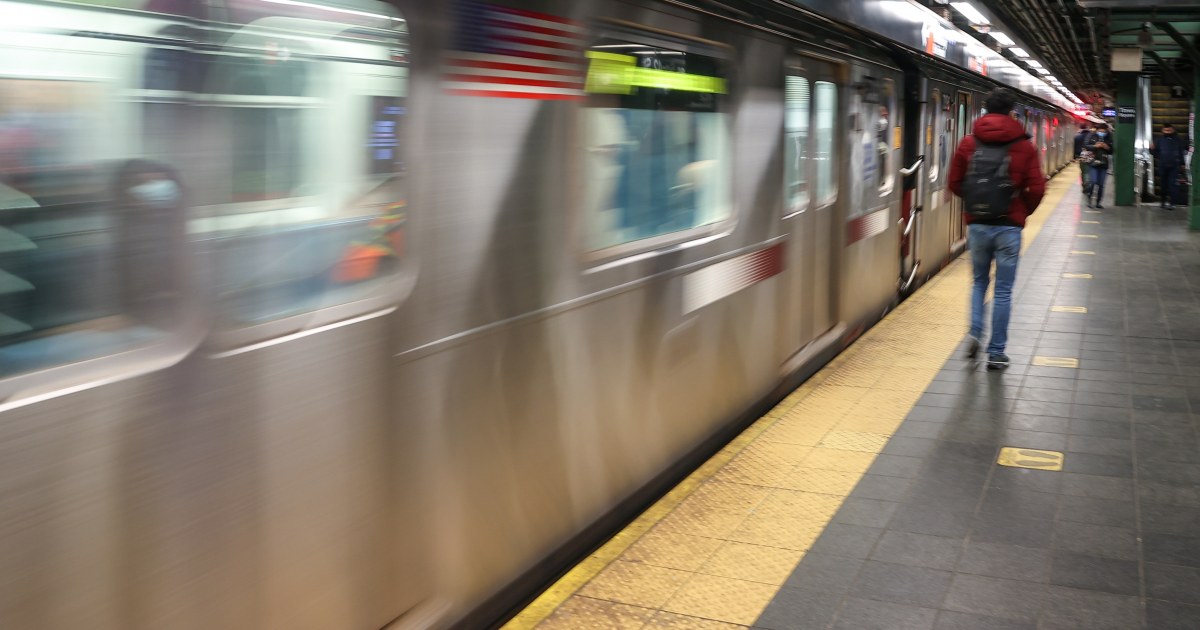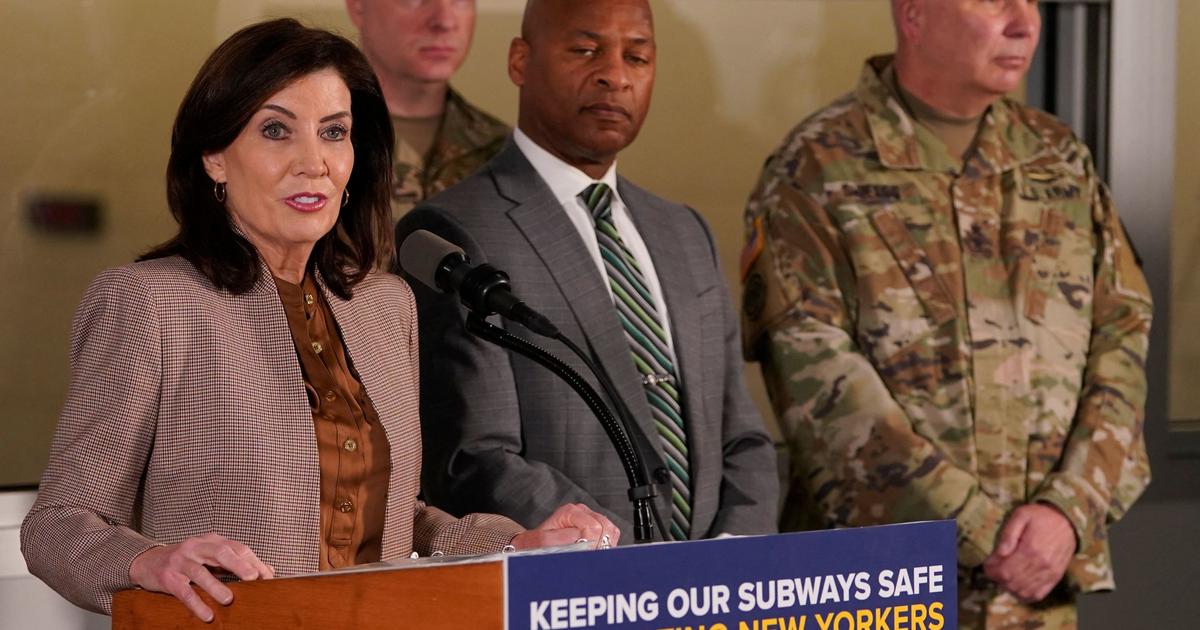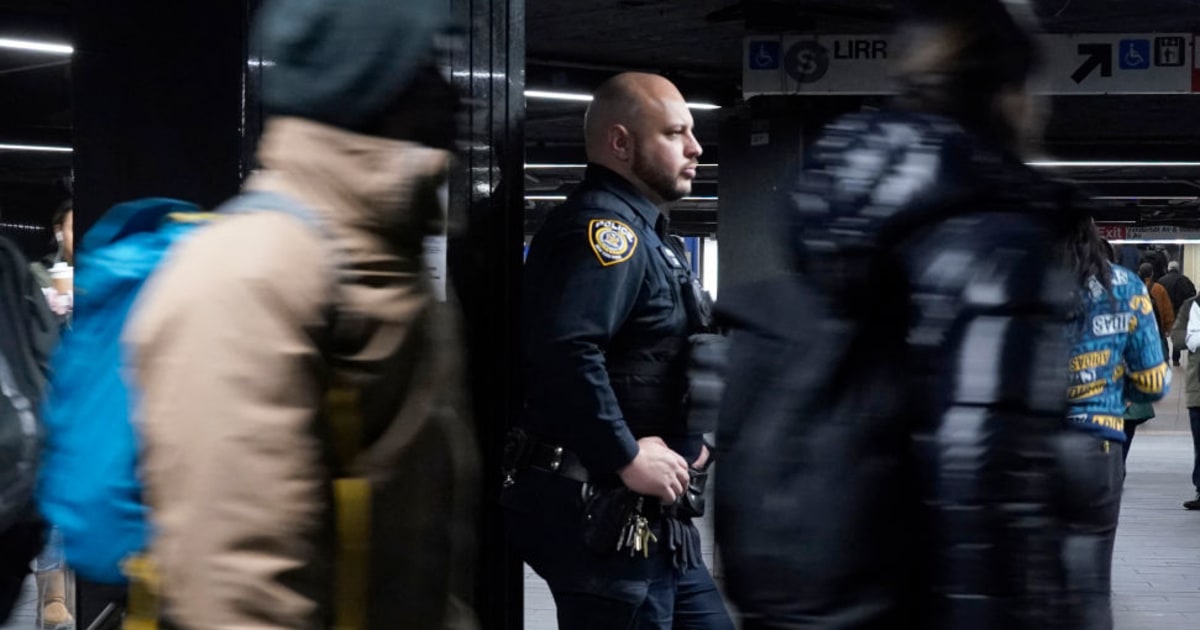Police officers talk to a passenger in a subway car in New York in May 2020. Jeenah Moon (Reuters)
The danger of the New York subway threatens to take its toll on the recovery of the city and one of the engines of its economy, the financial sector.
The murder of a passenger this Sunday in a subway car in Manhattan, a month after a shooting on another line that left twenty wounded, has sounded the alarm about rampant armed violence, not only in the suburban: the week passed an 11-year-old girl died in the Bronx from a stray bullet, fired by a 15-year-old boy who intended to kill another boy.
The force of reality is determined to go against the mayor, a former police officer, and his promise to improve security in the city, which he campaigned for.
The victim, Daniel Enriquez, 48, was riding in the last car of a train entering Manhattan's Canal Station.
He was shot in the chest without a word by an individual walking back and forth in the carriage and fled when the train pulled into the station.
The doctors could not do anything for the life of Enriquez, employed at the investment bank Goldman Sachs for 10 years.
The police have distributed images of the suspect, a man with a hood and a mask, to obtain citizen collaboration.
The random murder of Enriquez is the latest event recorded by the battered New York subway, a deficit service that is kept afloat thanks to the injection of federal aid.
When it has not yet recovered the volume of travelers prior to the pandemic, largely due to the continuation of teleworking in many sectors, the decrepit and yet vital service -crucial for the functioning of a city like New York- has been the scene of a series of very shocking attacks in the media, such as the shooting perpetrated in April by a man on a train in Brooklyn or the death of a woman in January, pushed onto the tracks when the train entered the Times Square station, the kilometer system zero.
The proliferation of incidents has led Mayor Eric Adams to increase the number of police patrols in the suburban area, as well as the funding of the police department, the largest in the country, by 200 million dollars.
According to the city's municipal transportation authority (MTA), there were 150 incidents in the first three months of this year, the most recorded in that period since at least 1997. Along with a crime-fighting message , the mayor announced in February one of his most controversial plans: to clean the subway of the homeless who survive in its facilities, whom he blamed in part for the increase in violence.
The man who pushed the woman onto the tracks was homeless with untreated psychiatric disorders.
Surface violence has also multiplied exponentially: as of May 8, shootings accounted for 75% more than two years ago, and hate crimes 103%.
In an interview published last week in the
Financial Times
, the mayor invited Wall Street CEOs to ride the subway to work as part of his effort to return employees to their Manhattan offices, a key move for the city's recovery.
It is estimated that only 8% of workers have returned to their jobs, while 40% combine the face-to-face modality with teleworking, and the latter is still the majority formula.
According to a study carried out in March by the influential group Partnership for New York City, which groups some 300 CEOs of the main financial and service firms operating in the city, the fear of violence in the suburban is the main obstacle to Return.
"People are afraid," explained a spokeswoman for the influential association at the presentation of the report.
“The survey reflects the basic anxiety that people feel about their own safety and about the future of the city.
Nearly 40% of those surveyed said they were considering moving out of town.
With federal aid hanging in the balance - in force until the end of May, it is expected to be extended -, in the week ending May 13, traffic in the city's subway was 12% higher than the average for the year past, but still 56% lower than in 2019, before the pandemic broke out, according to MTA data collected by the Bloomberg agency.
Subscribe here to the EL PAÍS América newsletter and receive all the key information on current affairs in the region.

/cloudfront-eu-central-1.images.arcpublishing.com/prisa/NUSWF5QREFA5XC4QFSYT2VEJLM.jpg)



/cloudfront-eu-central-1.images.arcpublishing.com/prisa/JK7LV3IVJ56DPOCMYQWVOSSIS4.jpg)
/cloudfront-eu-central-1.images.arcpublishing.com/prisa/XRN4JBKGQBOHVLS4HGW7BTWI4U.jpg)


